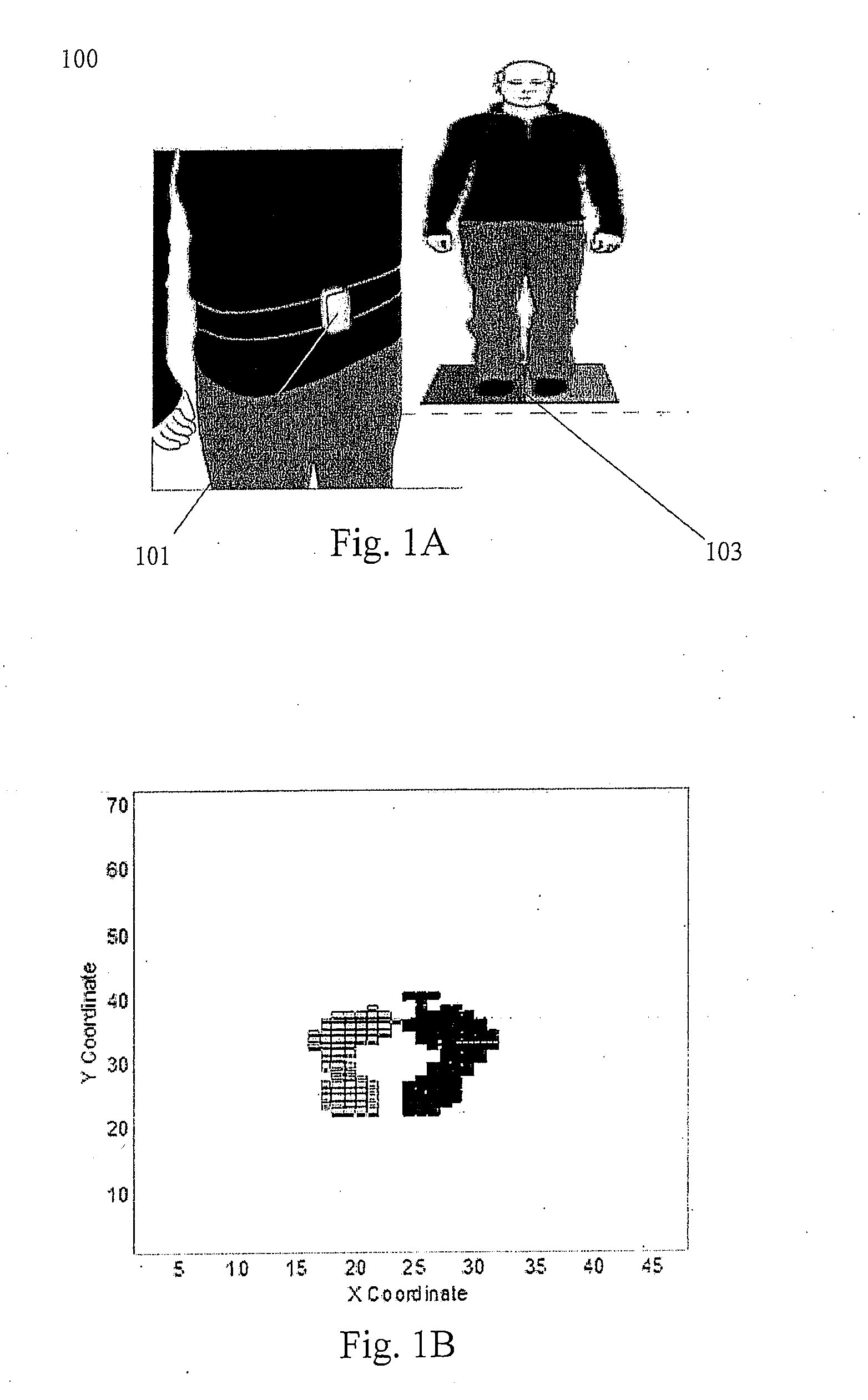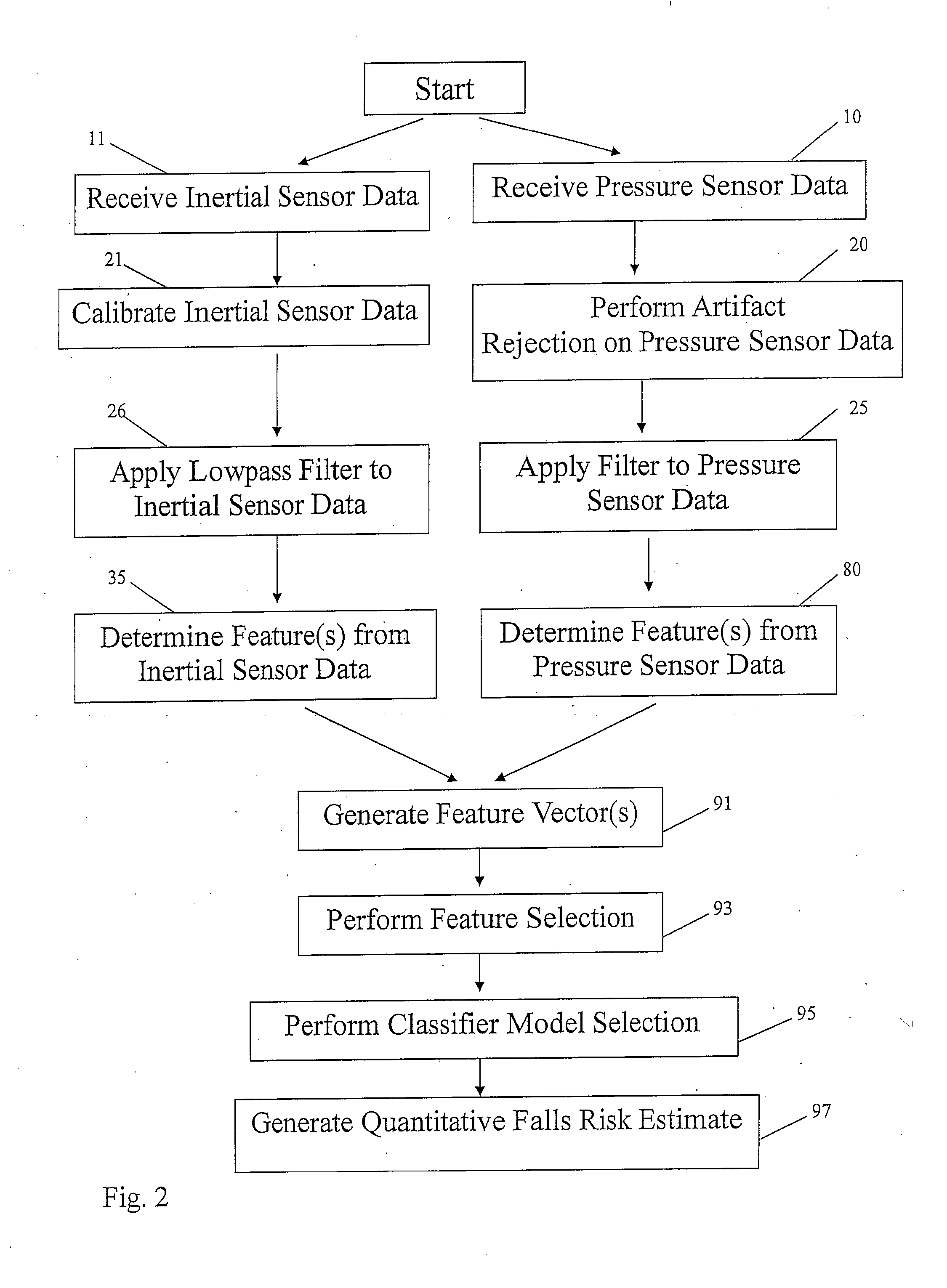Quantitative falls risk assessment through inertial sensors and pressure sensitive platform
a technology of inertial sensors and platform, applied in the field of sensing devices and methods, can solve problems such as negative health outcomes, serious injury, hospitalization, institutionalization, etc., and achieve the effect of reducing the risk of future falls and facilitating appropriate intervention
- Summary
- Abstract
- Description
- Claims
- Application Information
AI Technical Summary
Benefits of technology
Problems solved by technology
Method used
Image
Examples
Embodiment Construction
[0017]One aspect of this invention is directed toward assessing balance and estimating an individual's risk of falling using pressure and inertial sensor data collected from the individual. FIG. 1 illustrates a standing balance assessment environment 100 in which an inertial (kinematic) sensor 101 and a pressure sensor matrix 103 collect kinematic and pressure data, respectively, from a standing balance assessment trial participant. An algorithm may process the pressure sensor data and inertial sensor data to calculate balance-related features, which may be used by falls risk estimation models to predict a risk of future falls. Such models may include classifier models that can be trained with values of the balance-related features and labeled with known corresponding falls history or prospective follow-up data. Such class labels may provide the basis for supervised training of the classifier models. The data gathering may be a part of a clinical balance assessment, or may be used a...
PUM
 Login to View More
Login to View More Abstract
Description
Claims
Application Information
 Login to View More
Login to View More - R&D
- Intellectual Property
- Life Sciences
- Materials
- Tech Scout
- Unparalleled Data Quality
- Higher Quality Content
- 60% Fewer Hallucinations
Browse by: Latest US Patents, China's latest patents, Technical Efficacy Thesaurus, Application Domain, Technology Topic, Popular Technical Reports.
© 2025 PatSnap. All rights reserved.Legal|Privacy policy|Modern Slavery Act Transparency Statement|Sitemap|About US| Contact US: help@patsnap.com



